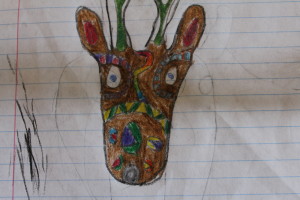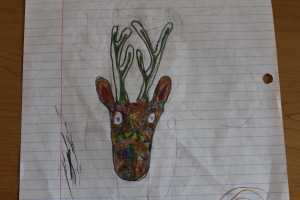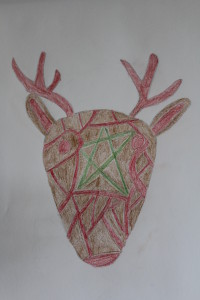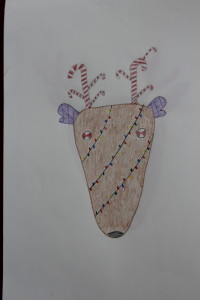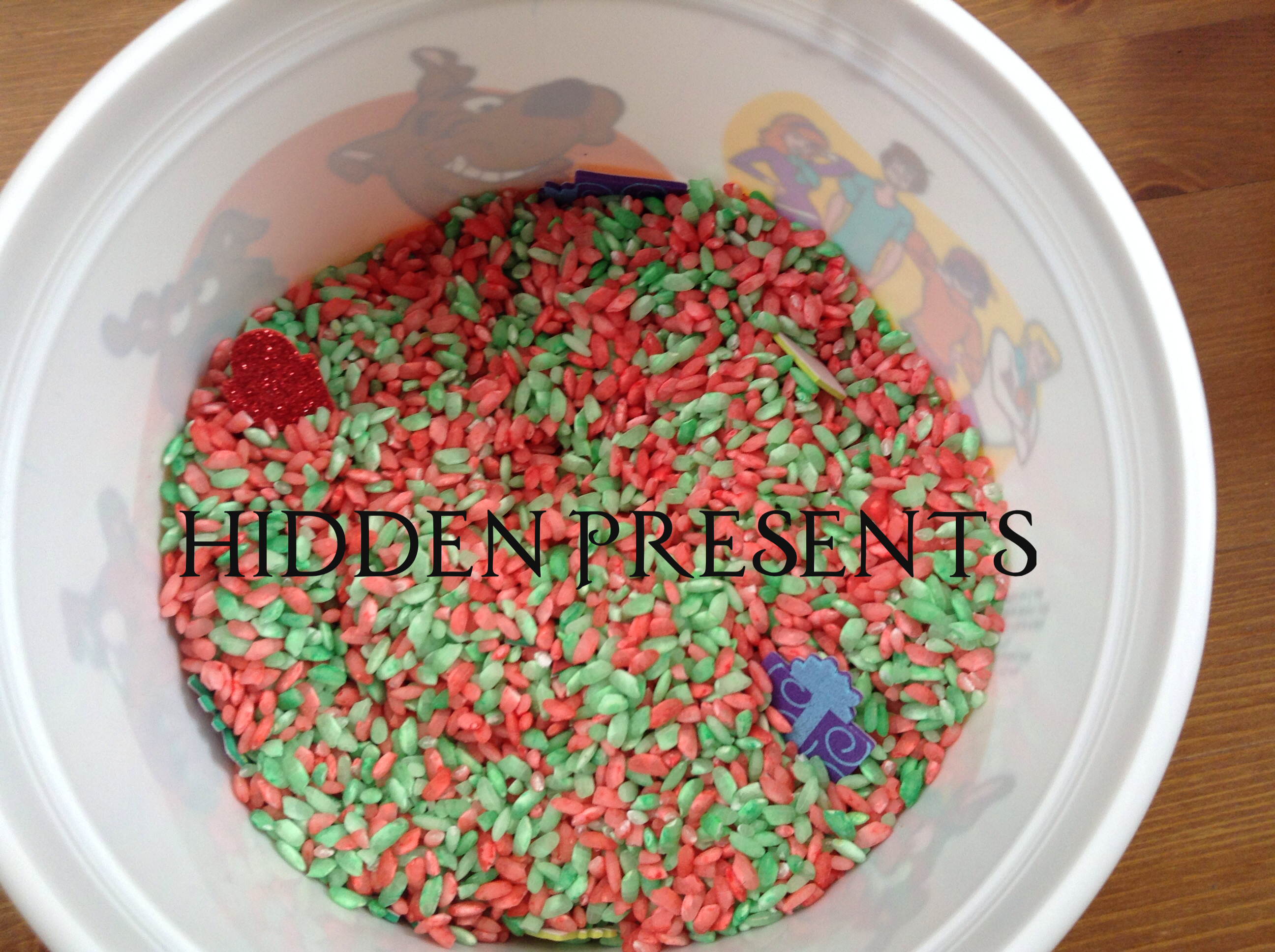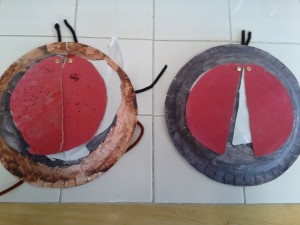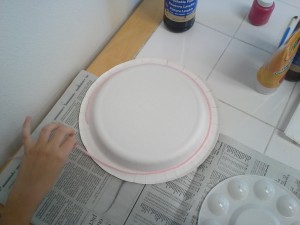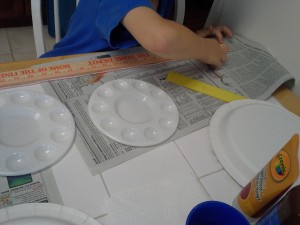First of all, you may be wondering, what is sensory play and why is it so important? If you are, read on. If you already know, scroll down to see the sensory play activity.
Sensory play is play that engages your child’s senses. There may be interesting textures to feel, new smells or tastes, fascinating sounds to hear, or visually stimulating colors, patterns, etc. We interpret the world through our senses, so it is important for young children to have play opportunities that allow them to do what they were born to do- explore with their senses!
Have you ever noticed a smell and it made you think of something? Whenever I smell honeysuckle I always remember walking home from school as a child because on my way home was a fragrant honeysuckle bush that I always stopped at to smell. Even as an adult, honeysuckle always brings up the same childhood memory. That’s how our brain works! We are always connecting information that we gathered from concrete, sensorial experiences.
Real life provides us with an innumerable amount of these experiences everyday. We don’t have to sit around fretting over providing sensory experiences, it happens naturally. Just like we buy our kids toys, take them to the park, or read them stories we like to provide our kids with fun things to do. Sensory play can be one of those fun things.
Kids enjoy sensory play because, even though they don’t realize it, they are satiating their need to examine the world through their senses. When they are engaged in an activity like Hidden Presents, they are learning!
Rice is a fantastic sensory material. Kids can scoop it, pour it, hold it, run through fingers through it, and so much more. What is fantastic about sensory play is that the child decides how to play with the materials provided. They learn to make decisions and experiment with their own ideas.
I tend to create activities using things I already have around the house. In this case, I had rice, food coloring, and some sticky foam presents left over from Christmas crafts years ago. So, you can follow this idea or use it to spur your own ideas for sensory play activities using items that you have around your house.
For this activity I focused on three senses. The sense of sight was stimulated by the red and green colored rice, as well as the brightly-colored presents hiding. The sense of touch was stimulated through manipulating the rice. The sense of hearing was stimulated by the sounds of the rice being moved and poured.
Hidden Presents
Materials:
- Dyed Rice (Prepare in advance)
- Small foam presents with a sticky back (found at craft stores)
- Paper and Crayons to draw a tree
Preparation:
To make the red and green rice, simple mix the rice in a Ziploc bag with food coloring and water. Set it out to dry overnight. Wikihow has a link that can walk you through the process with pictures to help: click here for instructions
Here is what some of the presents looked like:
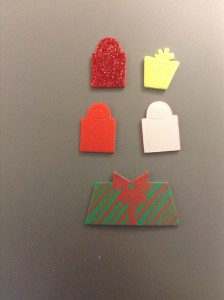
What we did:
1. First, I had my son color in a Christmas tree that I drew. I would have let him draw the tree, but he didn’t want to. He was creating the tree that he would put the presents under!
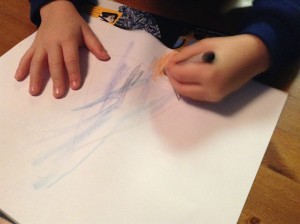
2. Next, I showed him the bucket full of red and green rice with small presents mixed inside. I told him that he was going to search for the presents and put them under the tree.
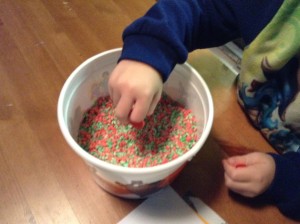
3. Once he found a present, he peeled off the sticker on the back to expose the sticky side (fine motor skill).
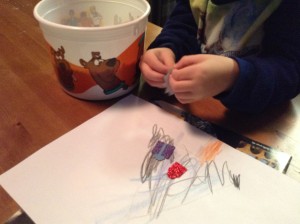
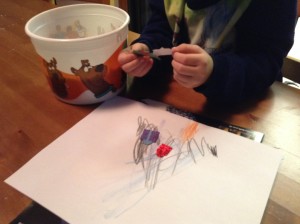
4. He pressed the presents onto the paper. Instead of putting them under the tree, he decided to put them on the tree! Remember, allowing your child to take the activity in another direction is okay, in fact, it’s encouraged! It gives them the control of the activity and by allowing it, you validate that their ideas are important and worth exploring. If we want our children to keep their curiosity, we have to give them some freedom to follow it.
5. After a little while, he announced that he was done finding presents. There were still more presents in the bucket, but I did not make him find all of them. Once again, this puts him in control of the activity– not me. He also came up with his own idea of putting the rice in a dish so that he can scoop it and keep playing with the rice. This activity started with me presenting my son with a task and ended with him taking control and creating a new idea. Good sensory play is child led, so the fact that it ended with his idea is a positive thing.
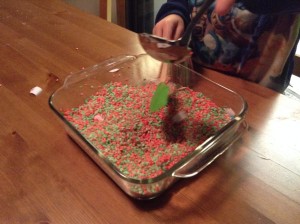
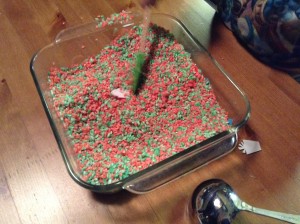
This activity is just one of many possibilities. What ideas does this give you? What ideas will your kids come up with?


